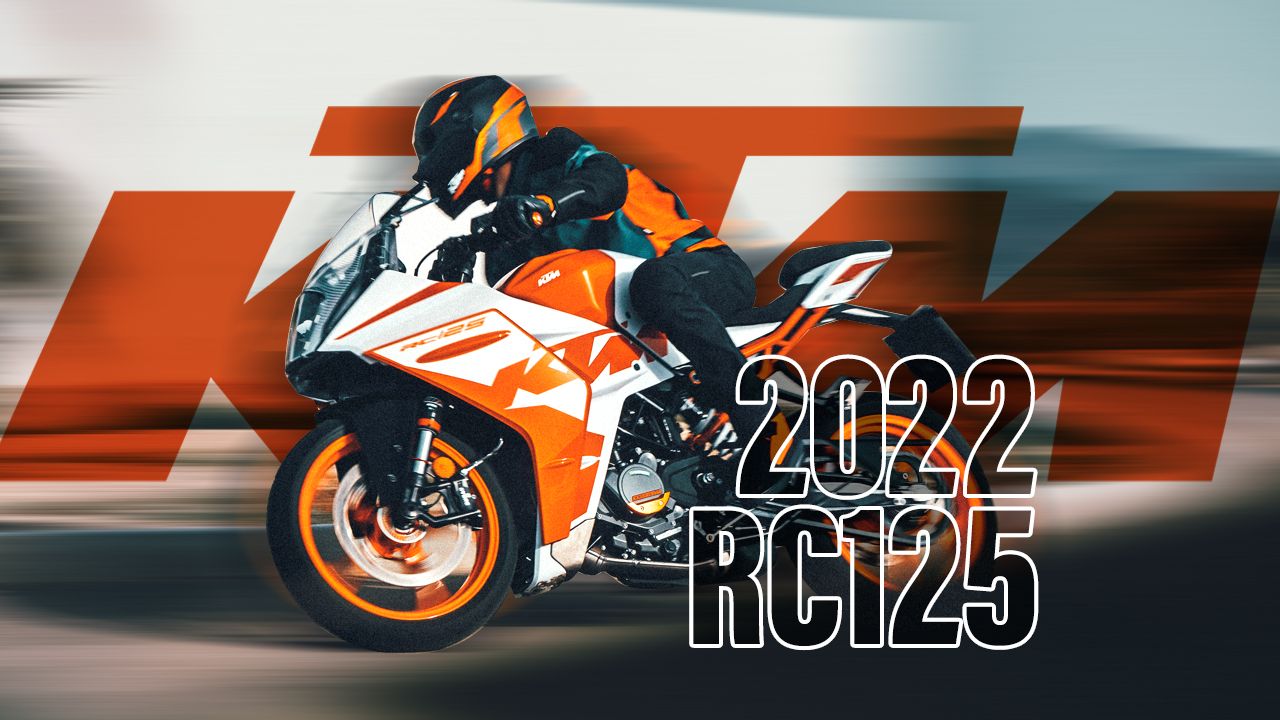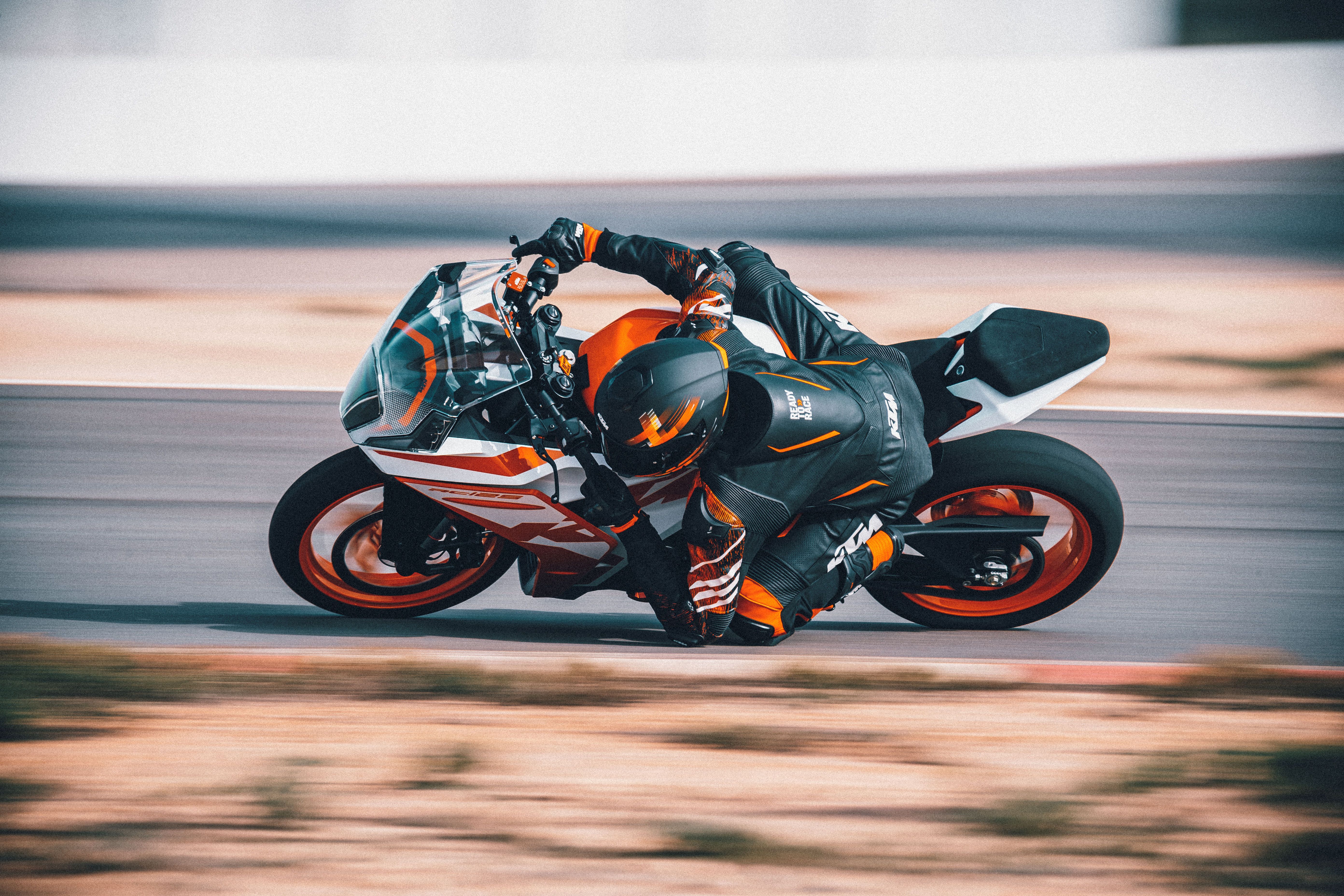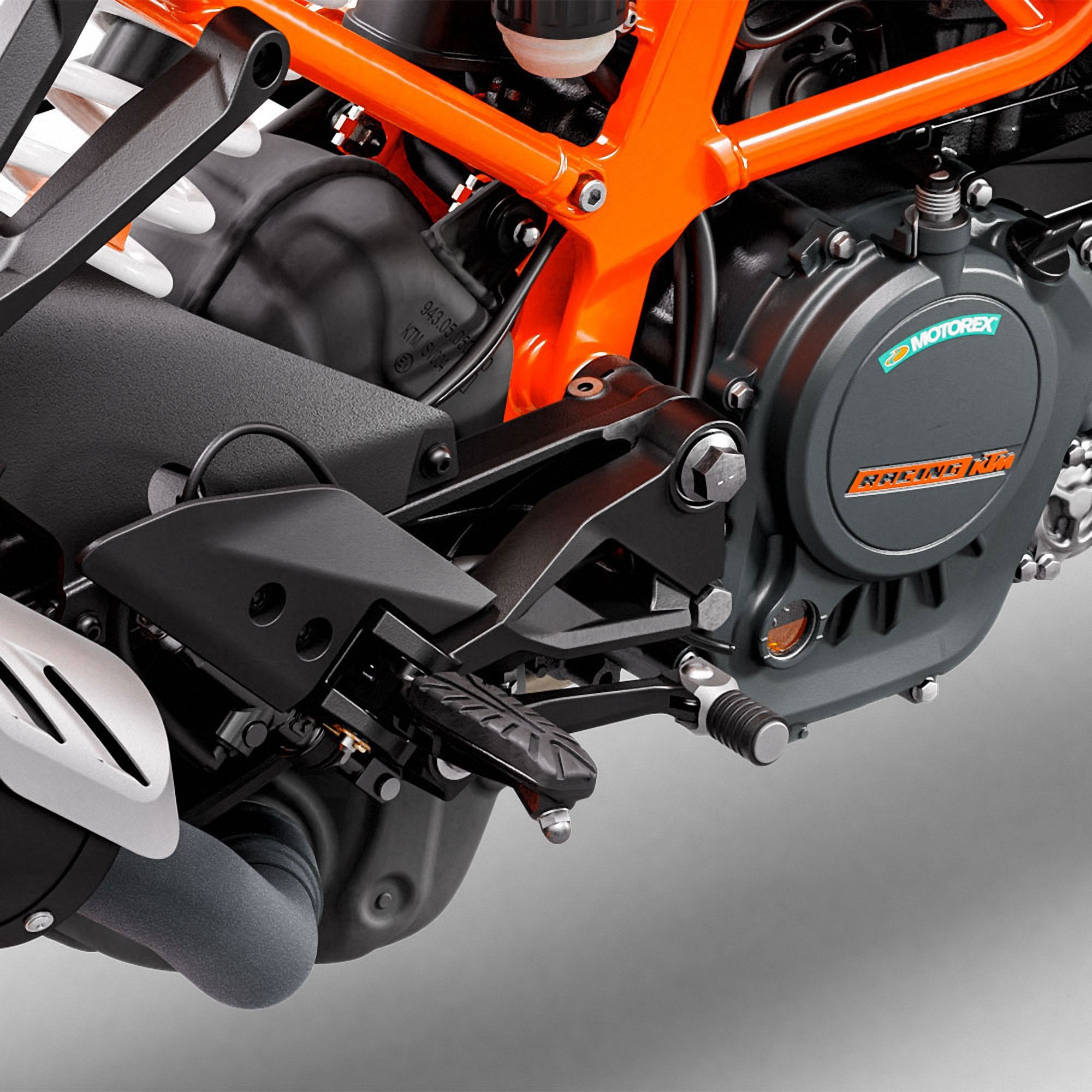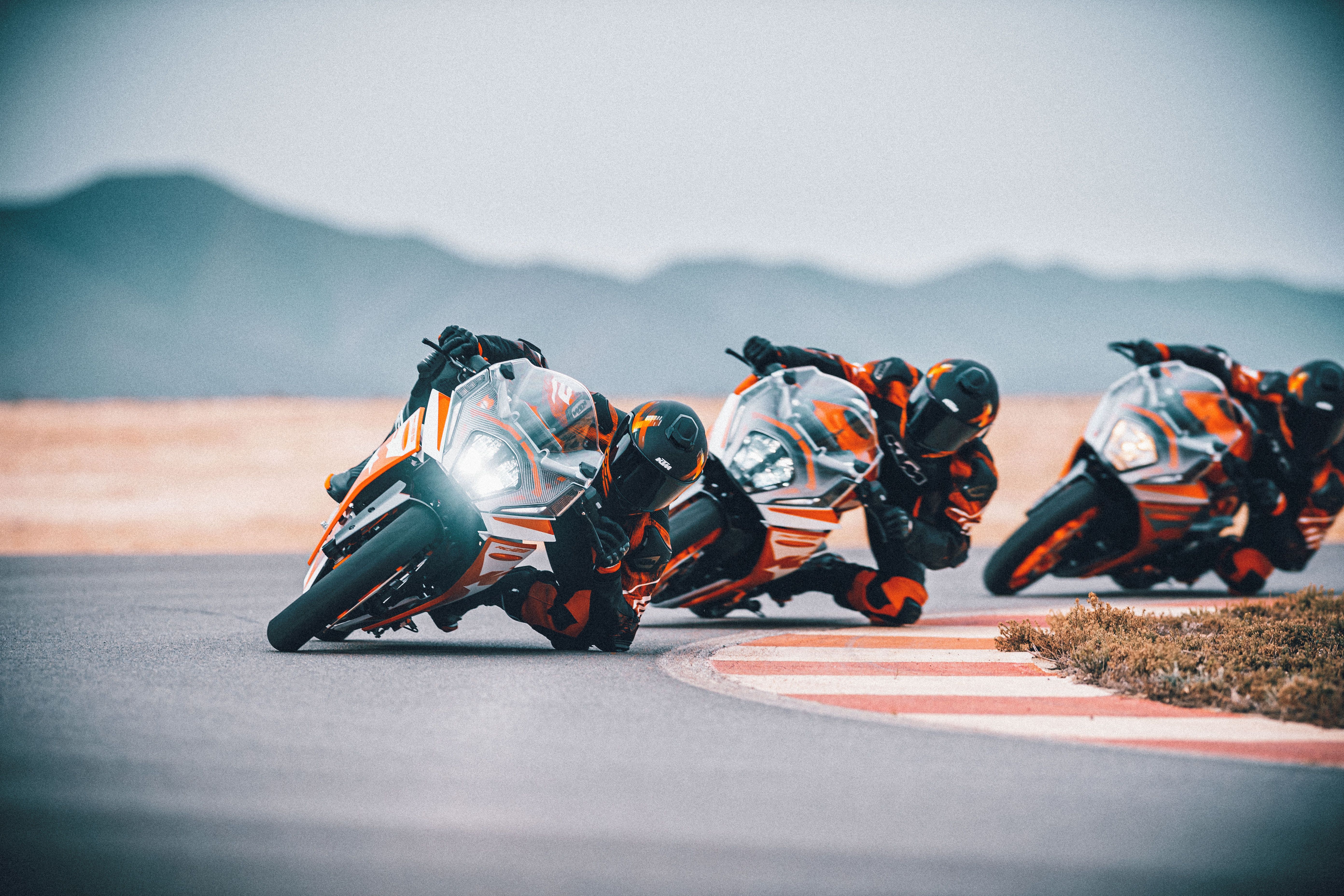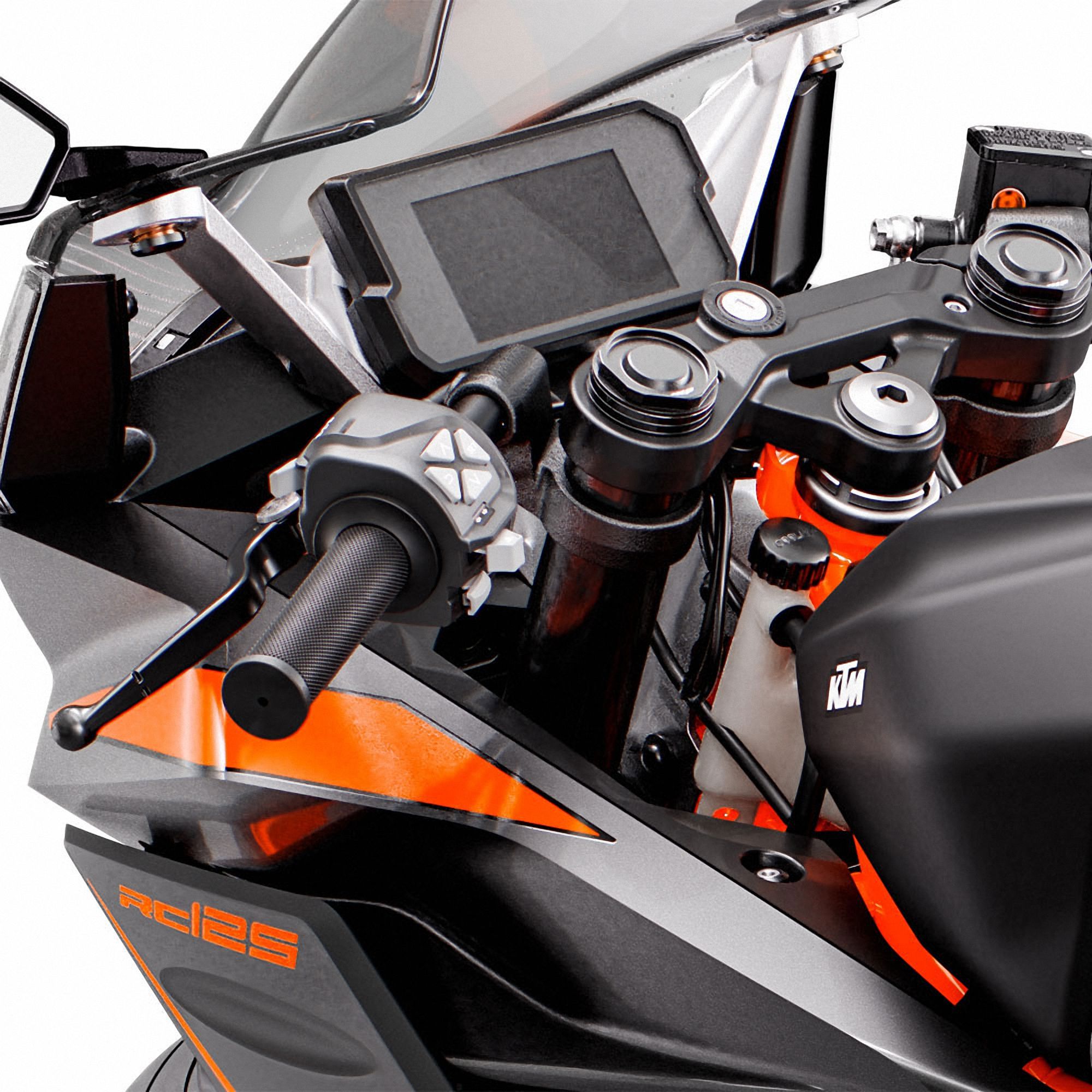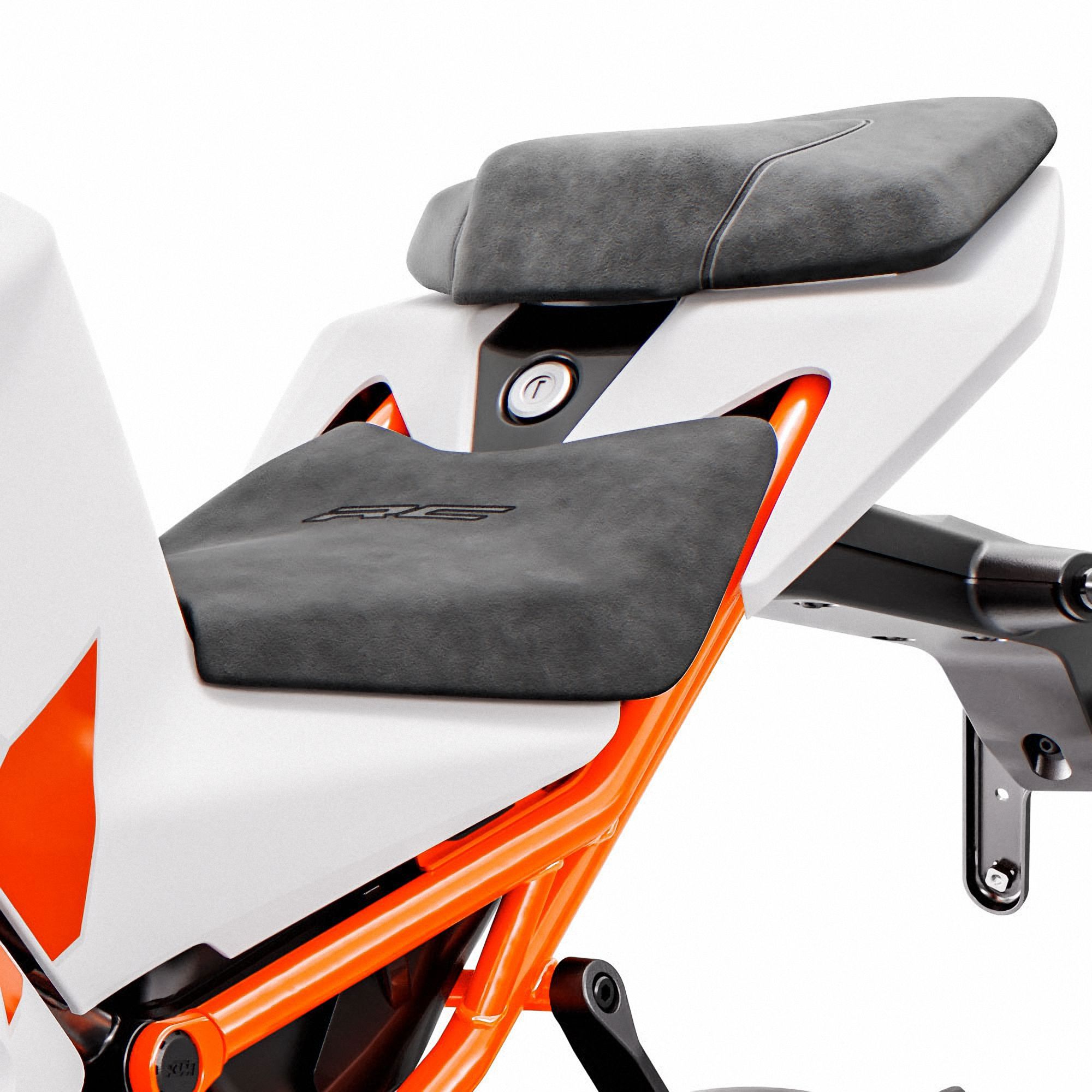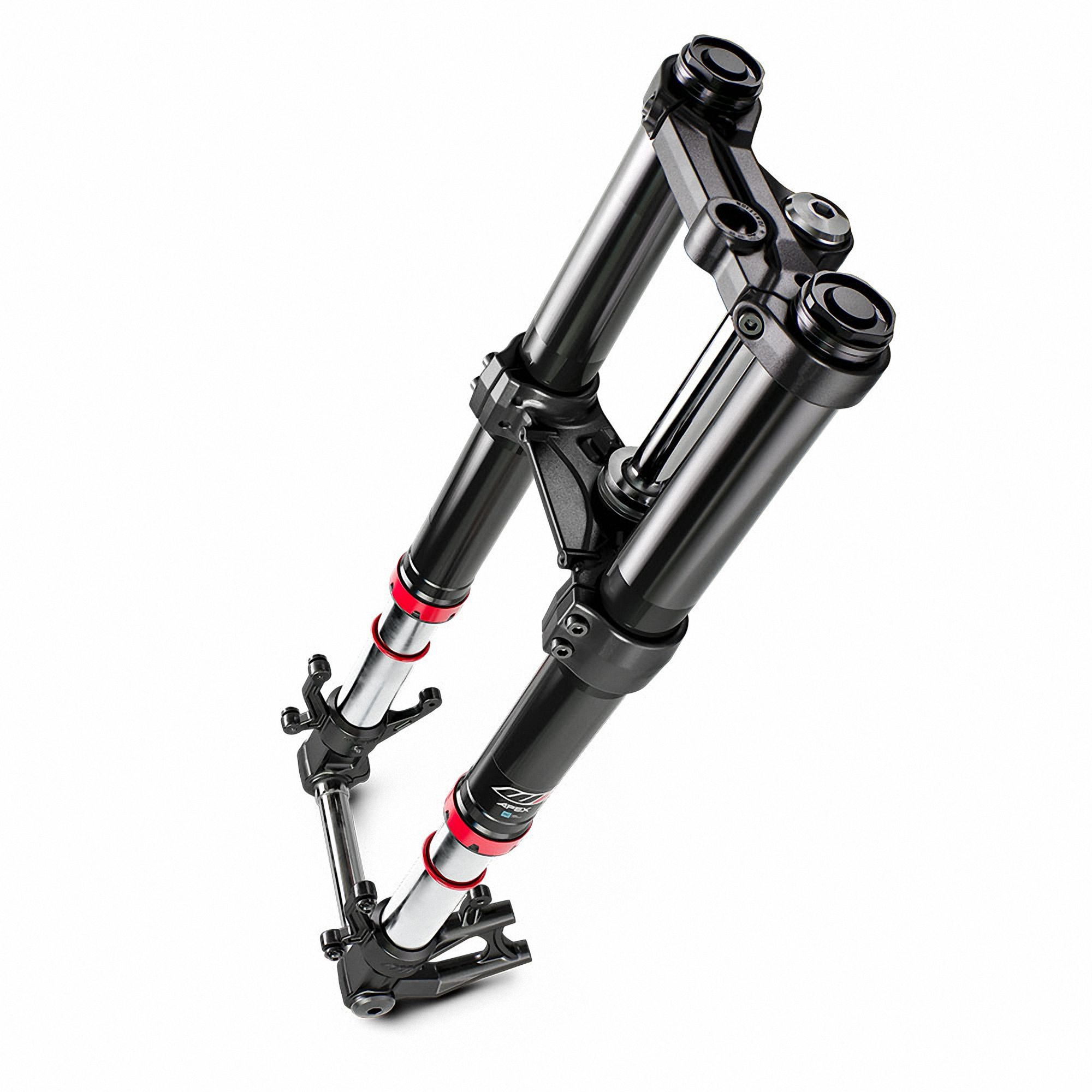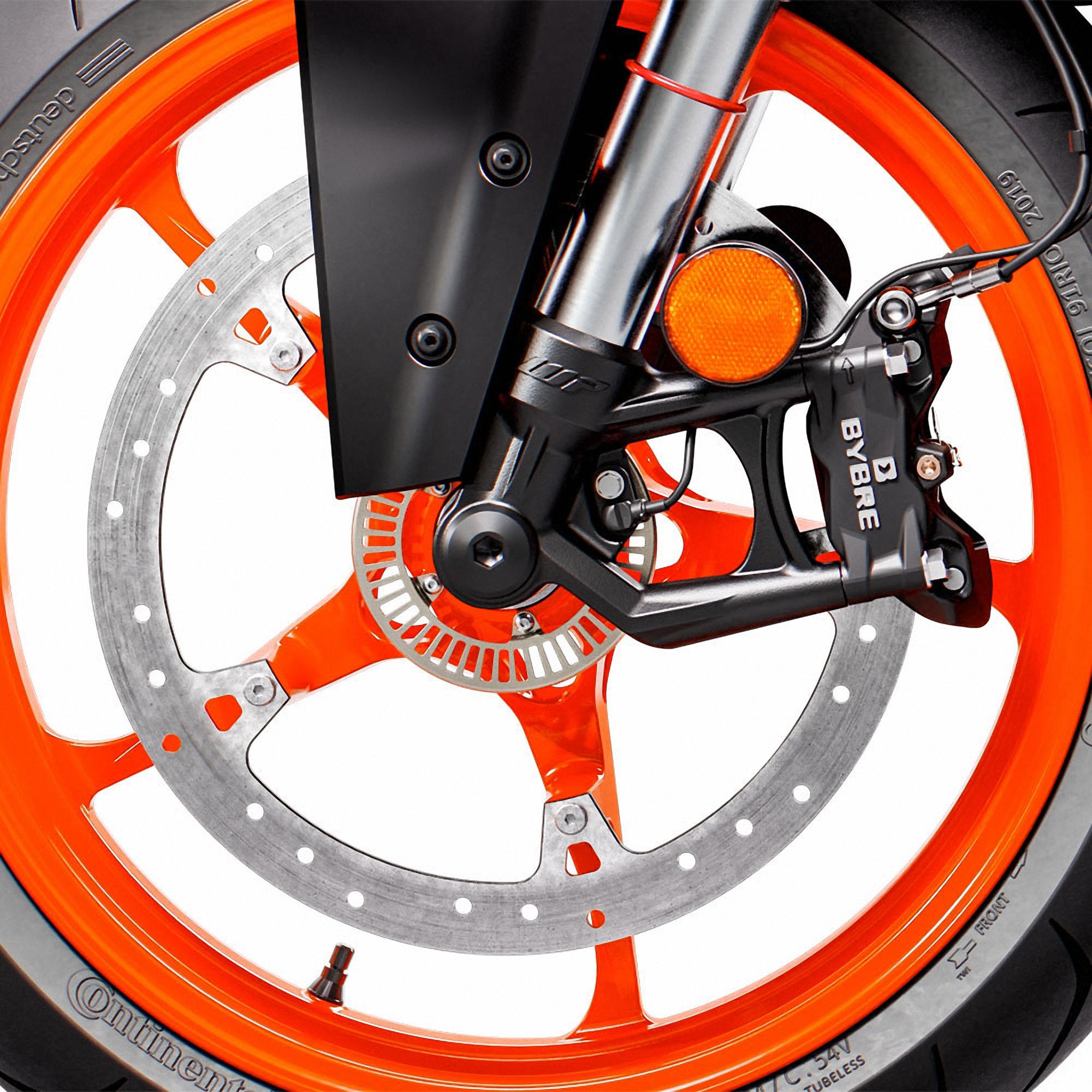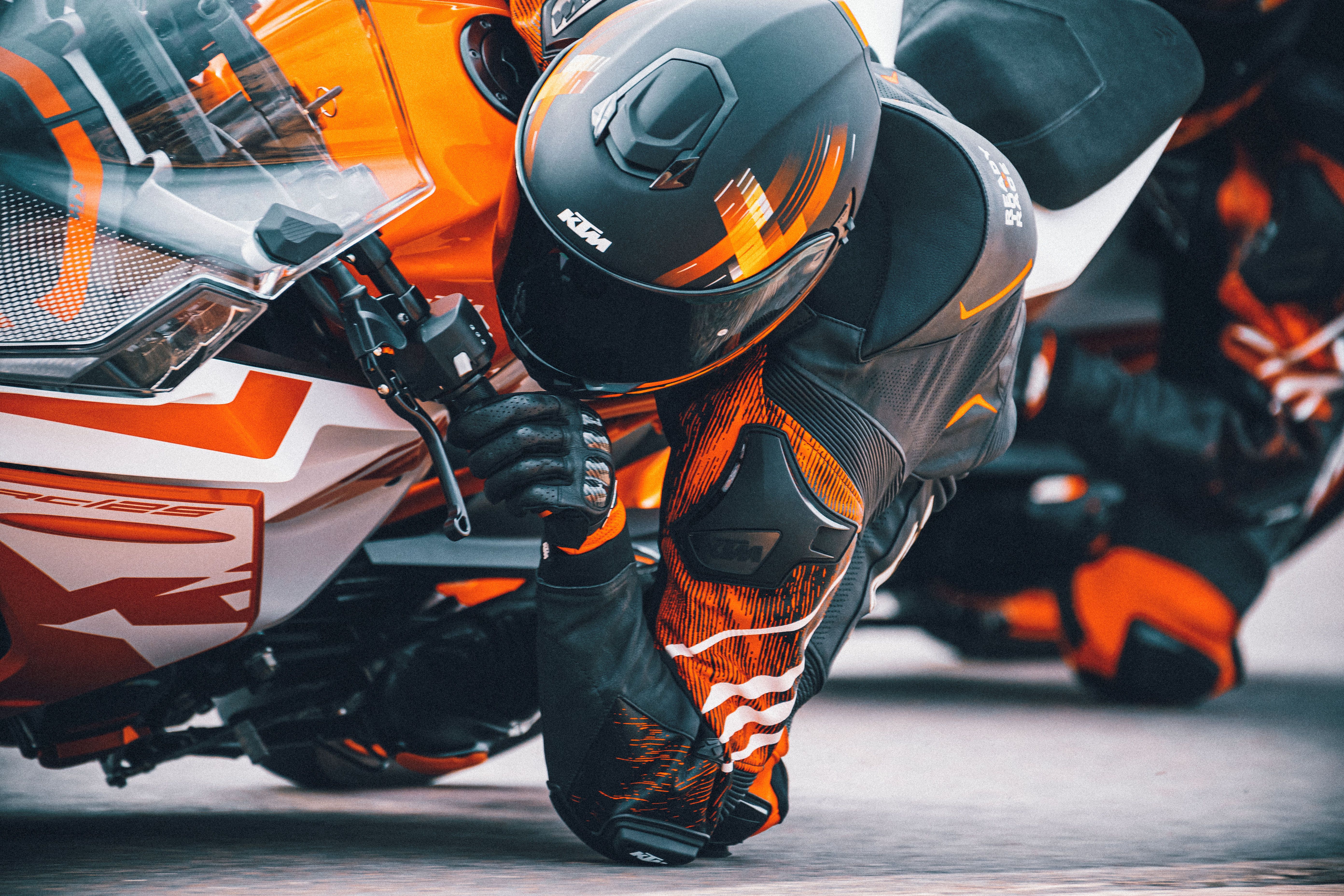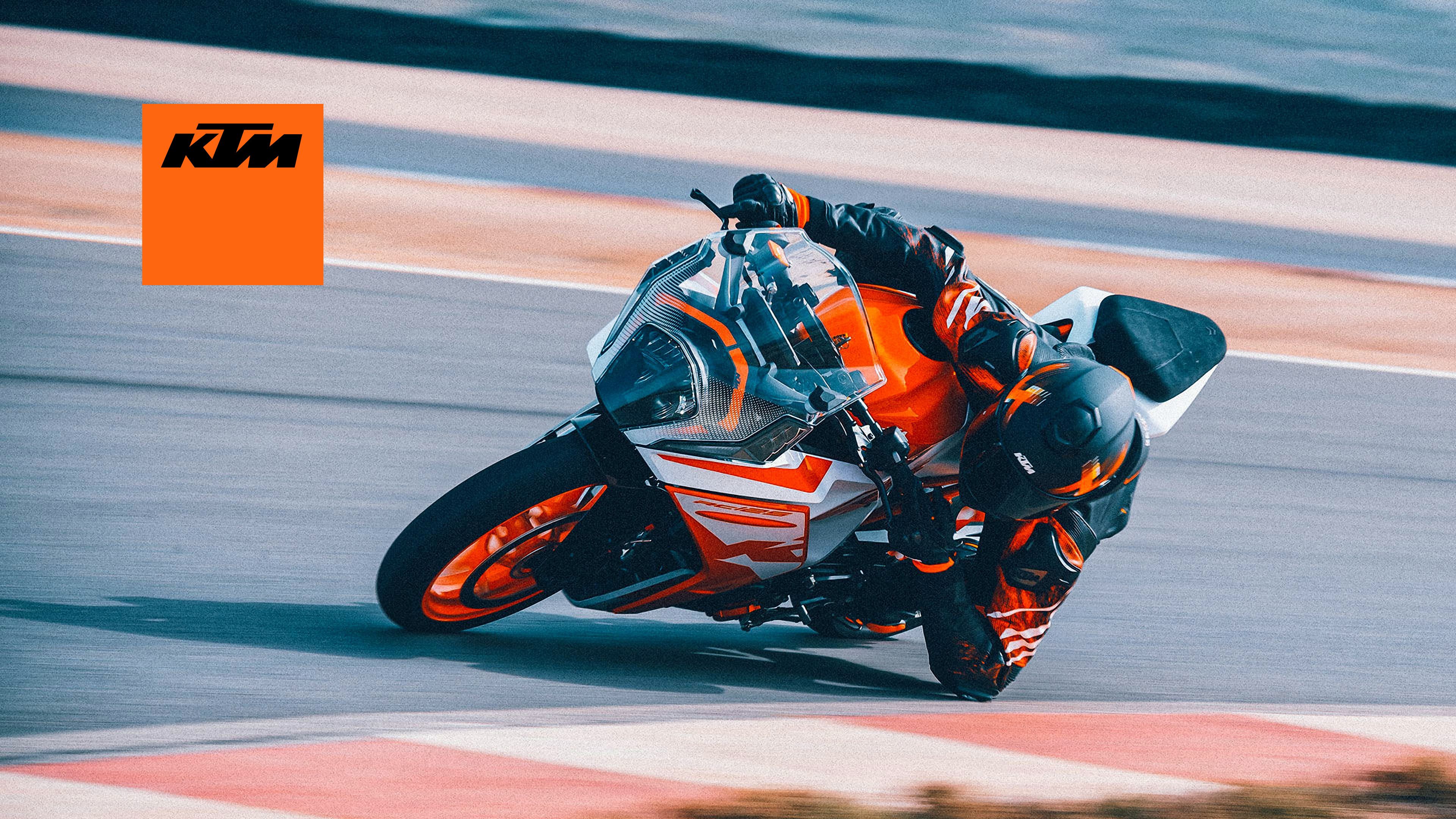KTM brushes up its race-tacular RC125 sportbike ahead of MY2022 with a number of upgrades and modernized tech features. New bodywork conceals the equally-new underpinnings and makes for a youthful look meant to appeal to the entry-level market and those riders who live in an area with a tiered licensing system.
KTM RC125 Performance and Capability
KTM powers its new RC125 with a four-cycle, water-cooled thumper that delivers 15 ponies and an improved, 8.8 pound-feet of torque. Oversquare, it runs a 58 mm bore with a short, 47.2 mm stroke for an actual volume of 124.7 cc, which gives the KTM RC125 125 cc displacement.
Engine control falls to the Bosch EMS while induction efficiency benefits from a new, larger-volume airbox. A DOHC setup controls the poppets with carbon treatment for a long service life and a standard clutch connects the engine to the six-speed transmission with a tough X-ring chain final drive.
That's it for the engine fandanglery, but not unexpected given the displacement bracket in question. I would argue that the lack of traction- and wheelie-control features is desirable on a learner's bike such as this, as it helps to cultivate a well-rounded skillset.
|
Engine: |
Liquid-cooled, single-cylinder, 4-stroke engine |
|
Displacement: |
124.7 cc |
|
Bore x Stroke: |
58 mm x 47.2 mm |
|
Torque: |
12 Nm (8.8 lb-ft) |
|
Power: |
11 kW (15 hp) |
|
EMS: |
Bosch EMS |
|
Lubrication: |
Wet sump |
|
Transmission: |
6-speed |
|
Clutch: |
Wet multi-disc clutch, mechanically actuated |
|
Chain: |
520 X-Ring |
Design
The front fender on the RC125 comes chopped to a minimum with spoiler-type uprights that guide the incoming wind around the inverted fork tubes and into laminar flow with the main fairing lowers on each side. A blunt entry carries a new, RC8-style, single-LED headlight in a recess so it is flush-mounted, with integrated turn signals at the outboard edges of the visage and stock DRLs.
This year brings with it a taller bubble screen that expands the rider's pocket upwards a tad, so you don't have to tuck in quite so far to find it. Also new is the TFT display that automatically adjusts itself according to the ambient light level for effective, 'round the clock visibility.
You can customize the layout of your display via the switchgear on the left handlebar housing to suit your preferences and riding style. In addition to the mundane metrics, the instrument package rocks KTM's “MY RIDE” infotainment bundle that networks through your smartphone so you can jam out and field phone calls underway.
Lately, one of the major complaints concerning KTM products is the, shall we say, “firm” feel of the seats, but the factory gives us a break here with thicker padding for both pilot and pillion. The new seat has a grippier outer material for improved butt-stiction even in wet weather.
Clip-on's pull the rider into an aggressive, forward-leaning posture, and come with a 10 mm range of motion to let you dial in the shape at the top of your rider triangle. Out back we find more LED yummy goodness in the recessed taillight at the tip of the tail, and the blinkers mounted down on the mudguard/plateholder structure.
To improve deep-cornering control and comfort, the factory made the bike's waist as skinny as possible, so you can count on lots of room for body English and plenty of surface area to grip with your legs when deep in the action.
|
Ground clearance: |
158 mm (6.2 inches) |
|
Seat height: |
824 mm (32.4 inches) |
|
Weight (without fuel): |
147 kg (324 lbs) |
Chassis
Like a kid coming home from fat camp, the new split-steel Trellis weighs in 3.3 pounds lighter and delivers the rigidity necessary for high-performance tracking in the turns. The bolt-up subframe also benefits from a Trellis design while the yoke-style swingarm completes the standing structure with cast-in webbing for lightweight strength and a supple rear-suspension action.
Lighter by 7.5 pounds together, the cast-alloy rims and a stiffer hollow front axle. This contributes to better suspension response all around, plus the reduction in rotational inertia makes it even more eager to dive into the corners and flick over into the reversals.
As for the stems, a set of 43 mm WP APEX forks take care of business on revised, but still fixed, damping and preload values. A WP APEX mono-shock floats the rear end with a 5.9-inch stroke opposite a 4.72-inch stroke up front, which is plenty for both the racetrack and the urban jungle alike.
The steering stem sets a steep rake angle of 23.5 degrees from the vertical, which, of course, contributes heavily to the RC125's agility. A four-bore radial caliper bites a 320 mm front disc with a single-pot anchor and 230 mm disc out back.
Here we find the first of the electronic rider aids in the twin-channel Bosch 9.1 MB ABS feature that comes with a Supermoto mode that lets you lock up the rear end and disable the anti-rear-wheel lift feature for more direct control over the machine. KTM RC125 top speed is around the 85 mph mark.
|
Frame: |
Steel trellis frame, powder coated |
|
Front suspension/ Travel: |
WP APEX 43/ 120 mm (4.7 inches) |
|
Rear suspension/ Travel: |
WP APEX – Monoshock/ 150 mm (5.9 inches) |
|
Steering head angle: |
66.5 ° |
|
Front brake: |
320 mm, Four-piston radial fixed caliper |
|
Rear brake: |
230 mm, Single-piston floating caliper |
|
ABS: |
Bosch 9.1 MB Two Channel ABS (Supermoto ABS) |
KTM RC125 Pricing
Built for areas with tired licensing and/or a robust small-displacement motorcycle culture, the KTM 2022 RC125 rolls for £4,299. Unsurprisingly, you get to choose between orange and black, or orange and white for the paint packages.
|
Color: |
Black, White |
|
Price: |
£4,299 |
Competitors
Much like at the top of the food chain, the game at the bottom is one of the incremental improvements with little to choose between models, so I felt like the YZF-R125 from Yamaha would serve as a stand-in for the newby-racer/A1-tier market in general.
Yamaha YZF-R125
Like KTM, the Tuning Fork Company goes to its own MotoGP line for design inspiration. This gives the YZF-R125 a big-bike look as well that is befitting of its station as a learner's model for riders working their way through the tiered licensing process.
Yamaha meets KTM at most of the design high points, though Yamaha sticks with LCD instrumentation instead of TFT, and carries an 11-liter tank against the 13.7-liter fuel hump on the RC125. Minor differences though are a given.
Power output is likewise similar at 15 ponies, though the Yamaha engine arguably has a broader powerband due to the Variable Valve Timing feature it rocks. Yamaha does score a significant hit in the drivetrain, namely the slip-and-assist clutch that provides anti-hop protection for the rear wheel with a boost to overall stability.
As much as I'm in favor of having beginners feel the machine before availing themselves of the electronic rider aids, I can find no downside to introducing new riders to the wonders of the slipper clutch right out of the crib.
You can score an R125 for £4,900, which does leave some cheese on the table. That $600 might well be a dealbreaker for riders up against a hard budget.
Read our full article on the Yamaha YZF-R125.
He Said
“The 125 cc market isn't as robust here on our side of the pond as elsewhere, and without a need to use a 125 as a steppingstone for licensing purposes, it's little wonder why. That said, the RC125 looks like it's bound for the European and Asian markets where it will fit right in with the rest of the Big Four and other major European builders.”
She Said
My wife and fellow motorcycle writer, Allyn Hinton, says, “Zippy is a good word to describe the new RC125. The lightweight frame, revised suspension settings, and retuned engine mapping makes for a lively ride even if you never go near a track. Small and compact, it's a nice size to filter traffic and you still get the thrill of riding a small-displacement bike balls-to-the-wall, which you just can't do on public roads on a larger displacement ride. It's quick and flickable, and the new seat is more comfortable and grips your butt better for those times you just want to let loose.”

